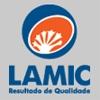Explore all the information on
Feedstuffs
Welcome to the page about Feedstuffs of Engormix; a source of knowledge on Feedstuffs.
Introduction Barley ranks fourth in global cereal production after corn, wheat and rice. About 65% of the world’s barley produced is fed to animals, including poultry. Australia is a significant global producer of barley, ranking in the top five countries with about 5% of global production and is among the top three barley exporters accounting for about 30% of malt and 20% of feed barley trade. Australia is a reliable supplier of two row...
Comments : 5
Recommendations: 1
Introduction Mycotoxins are toxic secondary metabolites produced by some filamentous fungi that grow naturally in many commodities around the world [1,2]. In Brazil, contamination of substrates by mycotoxigenic fungi is rather common, since climatic conditions favor their development and the production of mycotoxins. These substances are chiefly produced by three fungal genera: Aspergillus, Penicillium and Fusarium [3]. Of these, the genus Fusarium is of great importance for it...
Comments : 0
Recommendations: 0
...
Comments : 0
Recommendations: 1
As renewable diesel emerges as the ideal biofuel, soybean oil demand is expected to erupt, and U.S. Soy is poised to meet demand.
The announcement of unlikely partnerships, such as Loves and Cargill, Marathon Petroleum and ADM and Chevon and Bunge, have appeared on front pages of newspapers across the United States.
“It’s clear that sustainability is a bigger and bigger business driver around the world,” says Jim Sutter, CEO of the U.S. Soybean Export...
Comments : 2
Recommendations: 0
.jpg&w=3840&q=75)

Blending technology and sustainable solutions
Suggested link
Nelson Ruiz (Nelson Ruiz Nutrition, LLC) commented on the relevance of this protein source in the animal production industry throughout the years, during IPPE 2020 in Atlanta, USA....
Comments : 2
Recommendations: 3
The surge in corn prices has left pig producers looking for cost-effective alternatives. Tony Edwards explains that although barley contains less digestible energy than corn and wheat, because of its higher concentration of crude fiber, it is suitable for all types of pigs and provides more amino acids and more phosphorus than corn. World grain production is dominated by corn followed by wheat, rice, barley and sorghum. These grains are used for a...
Comments : 0
Recommendations: 0
I. INTRODUCTION Antibiotic growth promoters have been successfully utilized in the past to control gut dysbiosis (Dibner and Richards, 2005). However, poultry production is changing because of consumer and governmental pressure to reduce the use of antibiotics (Cervantes, 2015). Little or no attention is given by nutritionists to understanding the fibre composition in poultry diets and their role in gut health...
Comments : 0
Recommendations: 0
Barley ranks fourth in global cereal production after corn, wheat and rice. About 65% of the world’s barley produced is fed to animals, including poultry. Australia is a significant global producer of barley, ranking in the top 5 countries with about 5% of global production and is among the top 3 barley exporters accounting for about 30% of malt and 20% of feed barley trade. Australia is a reliable supplier of two-row spring barley that is suitable for a wide range of malting, brewing...
Comments : 1
Recommendations: 1
.jpg&w=3840&q=75)

Blending technology and sustainable solutions
Suggested link
Foodborne diseases & global scenario: Up to 30% of the inhabitants in developed countries may be affected by food-borne illness each year and the problems are likely to be even more serious in developing countries. The global occurrence of food-borne disease is difficult to evaluate, but in 2005 it was projected that 22 lakhs people, including 18 lakhs children, died from diarrheal diseases(WHO,2015). Microbiological hazards represent 93% of the incidents of food-borne...
Comments : 0
Recommendations: 0
Introduction Corn (Zea mays L.) is one of the most cultivated cereals around the world. It has a relevant role in economy and society due to its high nutritional value and productive potential [1,2]. Brazil is the third major producer of corn, after the United States and China [3]. Most Brazilian states are corn producers, but the largest volume of the cereal is harvested in the mid-west, the southeast and the south regions. Considering the 2018/2019 corn harvest, the leading...
Comments : 0
Recommendations: 0
...
Comments : 0
Recommendations: 0
1- INTRODUCTION In 2014, it was first reported that pigs could become infected with porcine epidemic diarrhoea virus (PEDV) following consumption of contaminated feed via natural feeding behaviour (Dee et al., 2014). Since that time, similar observations have been reported for Seneca virus A (SVA), porcine reproductive and respiratory syndrome virus (PRRSV) and African swine fever virus (ASFV) (Dee et al., 2020a; Niederwerder et al., 2019,). These and other studies have...
Comments : 0
Recommendations: 0
.jpg&w=3840&q=75)

Blending technology and sustainable solutions
Suggested link
ABSTRACT Poultry diets are formulated primarily using cereals and protein meals (corn, wheat and soybean meal) as the main ingredients. There is noted shift in using coproducts from cereals and oilseeds in poultry diets due to availability and relatively lower cost. However, there is wide variation in the nutritional values of both conventional feedstuffs and coproducts, which creates a necessity of developing routine...
Comments : 0
Recommendations: 1
1. Introduction The use of tannin in ruminant nutrition is increasing, mainly due to its diverse positive effects in several aspects concerning physiology, metabolism, and animal performance. However, research results are quite controversial regarding the concentrations and sources used, which reinforces the need for further studies to elucidate these still evident gaps. According to Haslam and Lilley [1], tannins represent secondary compounds of plants and are present in...
Comments : 0
Recommendations: 0
Introduction Wheat and barley as alternative cereals can be successfully replaced with corn in poultry diets. These grains could locally grow in many areas of the world and have lower water requirements than corn (Ravindran et al. 1999; Lin et al . 2010). The major components of wheat and barley are starch and proteins, though they have considerable content of non-starch polysaccharides (NSP), derived from the cell walls (Olukosi et al . 2007;...
Comments : 0
Recommendations: 0
This virtual seminar will take place via Zoom meetings in four days (20, 27, 29, and 30th of September, 2021), from 16:00 to 18:30 (Spain time). All the conferences will be given in English and there will be simultaneous translation to Spanish. The seminar will...
Comments : 0
Recommendations: 1
.jpg&w=3840&q=75)

Blending technology and sustainable solutions
Suggested link
Screening of EST-database from the whitefly B. tabaci allowed identification of three BtabCSP clones (BtabCSP-1, BtabCSP2 and BtabCSP3; Liu et al., 2016a,b). In the course of our studies on whitefly CSPs, we have shown that BtabCSPs and in particular BtabCSP2 contain specific genomic DNA sequences (Q260, BaA, CWF-1, BaA, OPT12 and SCAR markers) that can become extremely useful for biotyping. BtabCSPs represent a set of functional “nuclear” genes that are as important as...
Comments : 0
Recommendations: 0
INTRODUCTION Sorghum ( Sorghum bicolor (L.) Moench) is a tropical forage species widely used in ruminant nutrition. Sorghum is considered the best option in arid and semi-arid regions worldwide. Sorghum is a typical plant of hot climates due to its xerophilic characteristics, low soil fertility requirements, high tolerance/resistance to water stress and salinity (HASSAN et al., 2018). Sorghum grain has been used as an energy source in ruminant diet formulation and...
Comments : 0
Recommendations: 0
Introduction The poultry industry in Nigeria is an essential subsector of agriculture that provides food, employment, and other economic resources for the country (Ezekiel et al. 2012a). Livestock production can be threatened when feeds are contaminated by fungi and their toxic metabolites. Several mycotoxins, including aflatoxins (AFs), cyclopiazonic acid (CPA ), fumonisins (FUMs ), nivalenol (N IV ) and zearalenone (ZEN) have been reported to contaminate poultry feed and their...
Comments : 0
Recommendations: 1
...
Comments : 0
Recommendations: 0



.jpg&w=3840&q=75)













